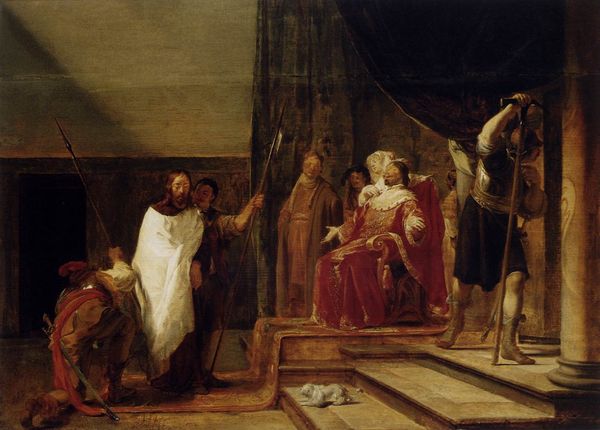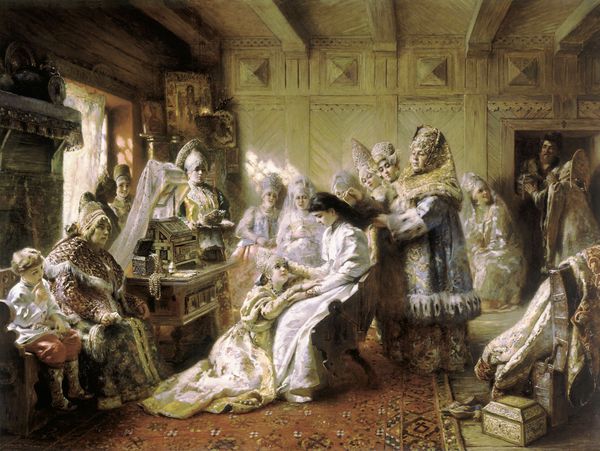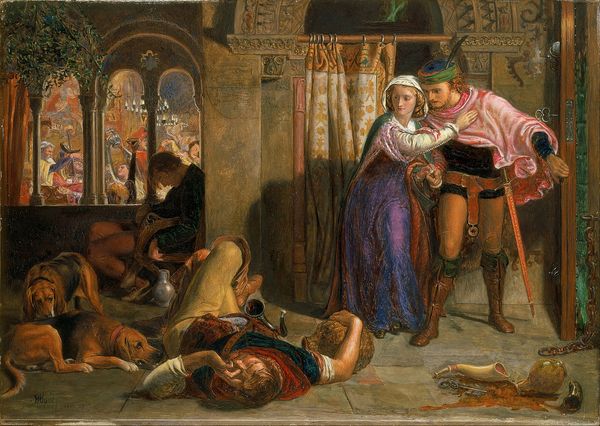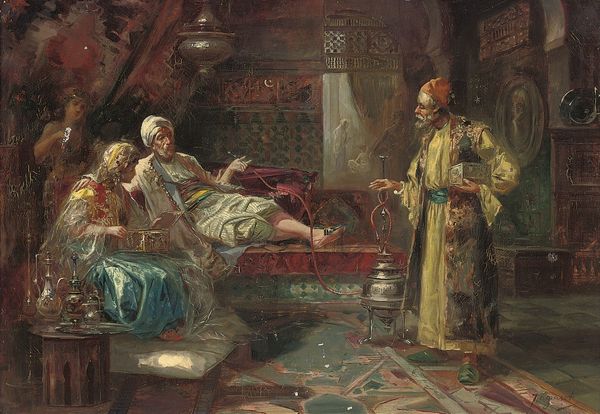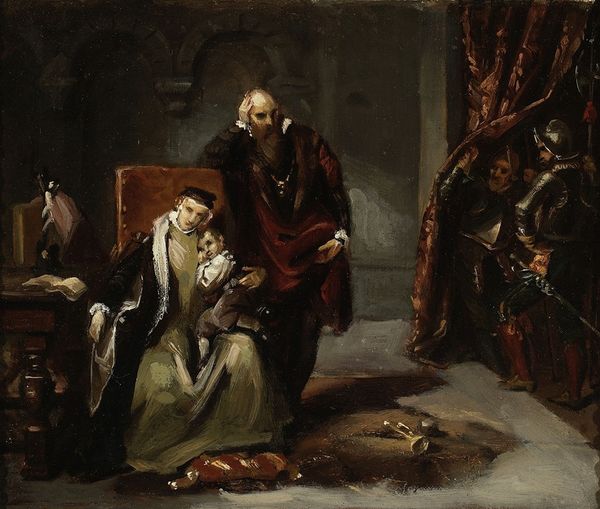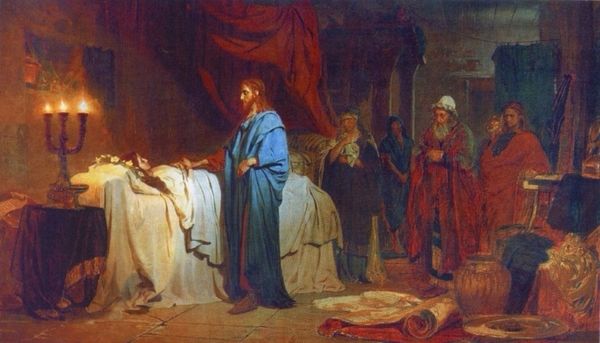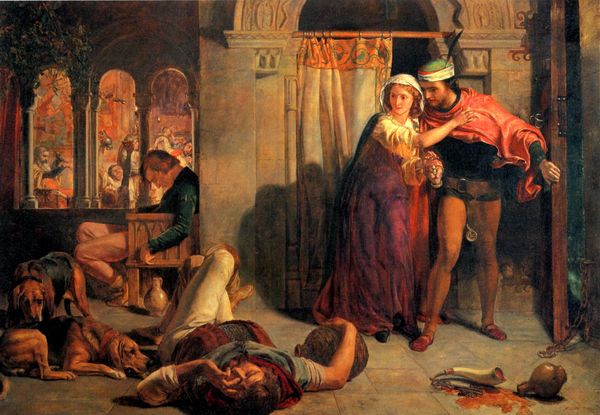
painting, oil-paint
gouache
medieval
narrative-art
painting
oil-paint
figuration
oil painting
history-painting
realism
Copyright: Public domain
Curator: What a somber scene. Editor: It truly is. We’re looking at "The Tonsure of King Wamba," painted in 1894 by Joan Brull. It depicts the forced tonsuring, or shaving of the head, of the Visigothic King Wamba in the 7th century. Brull uses oil paint to bring a realism to this dark historical episode. Curator: My immediate impression is one of captivity, both physical and spiritual. The way light catches the pale face of Wamba on the bier as they forcibly cut his hair evokes images of ritual sacrifice, or even a foreshadowing of funerary rites. The dogs at the seated man's feet symbolize loyalty but are powerless to stop this violation. Editor: Precisely. The tonsure wasn't just a haircut; it was a symbolic stripping of Wamba's power and authority. The act rendered him canonically unfit to rule, removing him from the throne through what could be interpreted as religious manipulation and political machinations. Brull’s capture of this moment serves as an enduring indictment of unchecked power and its instruments of control. Curator: Consider how Brull uses visual cues – the stern-faced clergy, the opulent vestments against the bare stone walls, and the physical vulnerability of Wamba to deepen that indictment. We understand he wasn't merely removed; he was utterly undone, the very essence of kingship stripped from him. There's a very visceral response created through that depiction. Editor: Yes, there's an unsettling ambiguity present in this narrative. It begs us to question who is wielding power justly. Were the actions taken justified, or was it a politically motivated assault cloaked in religious piety? The painting invites critical thought about power structures and their potential for corruption within historical contexts but also mirrored in our current world. Curator: Indeed. It illustrates the ways symbolism can be weaponized. The image is not just a scene; it's an act of iconoclasm in reverse—a dismantling of the symbolic king to alter reality itself. Editor: And, ultimately, isn't that the question history continues to pose? The tension between narrative and power, perpetually re-enacted and re-interpreted. Brull has really seized something profound in this artwork. Curator: A haunting and unforgettable depiction, forcing us to confront uncomfortable truths about power and representation across the ages.
Comments
No comments
Be the first to comment and join the conversation on the ultimate creative platform.
